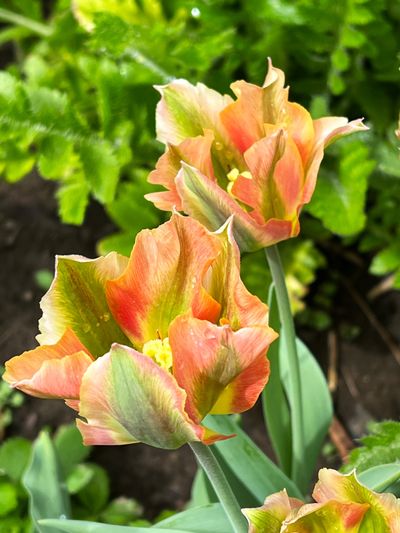In the Garden: Why be boring with spring color?

While I love standard types of tulips and daffodils as much as anyone, I’ve become hooked on growing unusual species of spring-flowering bulbs in the past few years.
When you think of the long, cold winters we have to endure, it seems only fair that we should have flowering bulbs to look forward to. If you’re in the market for something special, I’ve got plenty of suggestions for bulbs that will add extra pizzazz to your garden.
Species tulips tend to be shorter in stature, but they’re very hardy, tend to naturalize better and the color offerings are stunning. They also bloom for a longer period of time than the more traditionally grown tulip varieties. Tubergen’s Gem has alternating yellow and red petals that remind me of a court jester’s collar. Lady Jane is similar but with white and rosy-red blossoms. The petals on Tulipa dasystemon are egg-yolk yellow with white tips.
I’ll be planting Tulipa humilis Persian Pearl this fall. When I saw its deep plum petals and bright yellow centers, I knew I should give it a place in my garden. The flowers are only 6 inches tall, so I’ll be sure to plant them right at the front where I can admire them.
One of things I really like about narcissus is that they are deer- and gopher-repellent. Last year, I decided to try some Triandrus narcissus, which are a more petite species that features multiple fragrant flowers on each stem. I chose Moonlight Sensation, which has star-shaped blossoms with white cups and creamy yellow petals. This fall, I’m going to add a variety of Bulbocodium narcissus called Golden Bells.
While rock garden irises are quite petite, their petals are breathtakingly beautiful. I started out with pale-blue Katharine Hodgkin two years ago and loved them so much that I planted a lavender variety called Harmony. After spotting dark purple Pixie with its yellow splashes, I have decided to add them to the garden this fall. Yes, this is an addictive hobby.
Most gardeners plant white, purple or yellow crocus bulbs in their flower beds. They are always a cheery sight in early spring. But how about adding Orange Monarch to the mix? I’ve never seen a deep-orange crocus before. Wouldn’t they look stunning next to those purple Pixie irises? The official name for this one is Crocus olivieri ssp. Balansae Orange Monarch, just in case you want to track it down.
Grape hyacinths are also a common sight in gardens and are tough as nails. I’ve had the standard blue variety for a long time but spotted Ocean Magic at a nursery a few years ago.
Their unusual blooms are dark purple at the bottom, pale blue in the middle and white on the top just like a dollop of whipped cream. Needless to say, they are also growing in my garden and are a delight!
No matter which bulbs you decide to grow, the best time to plant them is in the weeks before the ground freezes solid. For the best effect, group bulbs together rather than planting them in a row.
When bulb-shopping, remember to visit your local independent garden centers first to see what they have to offer this fall. There just might be some unusual, eye-catching bulbs that you’ll want to add to your own garden.
Susan Mulvihill is author of “The Vegetable Garden Problem Solver Handbook” and “The Vegetable Garden Pest Handbook.” She can be reached at Susan@SusansintheGarden.com. Watch Susan’s videos at youtube.com/susansinthegarden.